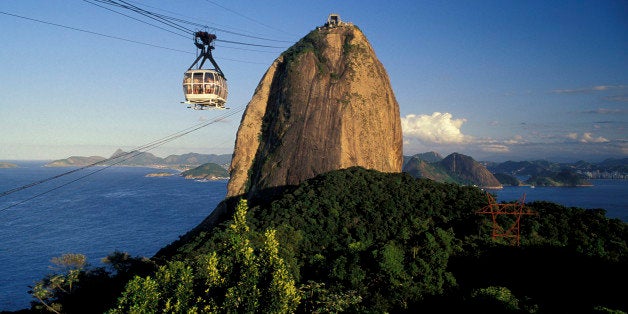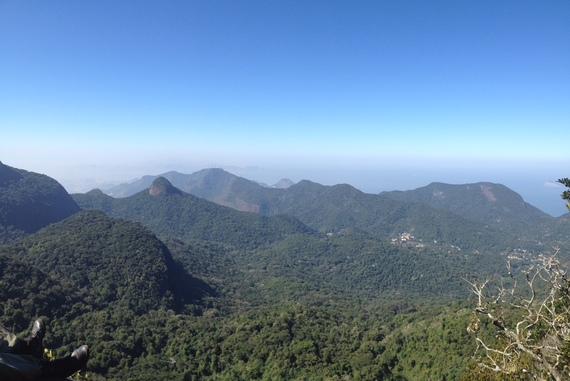
Over the next few weeks, the first Olympic Games ever to be hosted in South America will be taking place in Rio de Janeiro, Brazil. In the lead up to the global event, Rio has been getting extensive media attention, most of it not being the best of publicity. Inadequate and incomplete infrastructure, corruption, and the Zika virus are just some of the issues that have been getting the spotlight. Rio's environmental debacles have also been getting a lot of global attention: a contaminated bay and beaches where athletes from around the world are coming to compete in is particularly worrying. The city lacks a basic sewage system and the Bay of Guanabara was supposed to be cleaned up before the start of the games (but never was). Yet despite all the negative media and attitudes, Rio's Olympic Opening Ceremony provided a peek into one of the many reasons the Cidade Maravilhosa (or Marvelous City) gets its name and an impressive environmental trait that not many other cities can claim: Rio de Janeiro has the world's largest urban forest.
In what was another first for the Olympic Games, the Opening Ceremony highlighted the host country's rich cultural and environmental diversity. It made an extraordinary statement as it brought climate change and human's responsibility to the forefront of the audience's attention, as well as the role forests and trees play in combating a warmer world. The ceremony even went even further by giving each country participating in the games a seed of a different native tree species that would then be planted in Rio's Athlete's Park (totaling 207 different species of trees).
When forests are mentioned along with "Brazil," the Amazon rainforest is usually the first thing to come to mind. Yet the country is actually home to various unique forests and ecosystems that create Brazil's ecological makeup. The Mata Atlântica is a forest that runs along Brazil's coast and that, although smaller in size, "harbors a range of biological diversity similar to that of the Amazon." Rio de Janeiro's urban forest and national park (Parque Nacional da Tijuca) makes up 3,953 hectares or 39 square kilometers (15 square miles) of the Mata Atlântica.
Why the big deal about urban forests? Forests are vital players in the ecosystem and have an important role in providing us with essential natural resources and services. Besides removing CO2 from the air and providing oxygen, regulating soil erosion and runoff, acting as a filter for clean water, and promoting biodiversity in landscapes that are often lacking flora and fauna, urban forests also improve the quality of life of citizens and provides them with nature and wilderness to enjoy. Living alongside forests encourages the idea of humans being a part of nature and brings tourism (in 2014, the Parque Nacional de Tijuca saw over 3 million visitors, as it also contains the famous Cristo Redentor or Christ the Redeemer statue as well as popular hikes to Pedra Bonita and Pedra da Gávea). The park is also home to 67 threatened plant species (and protects 11 species that aren't found in any other protected area) and 226 species of birds and 63 species of mammals: all this located right in the metropolitan's borders.
Some may criticize the Opening Ceremony's eco-theme and environmentally conscious framing as a way to hide the city's various environmental issues such as lack of sewage system or the country's deforestation patterns. And while these are major issues Brazil needs to address, Rio's environmental status should not be completely undermined. The city was innovative in using this year's Olympic games opening ceremony as a way to provide an important and powerful message to the millions of people that watched. It signals to us that times are changing and it also shows Brazil's potential to be an environmental leader. In a time when the Cidade Maravilhosa has gotten some negative media attention, particularly in regard to its environmental record, let's take a look at the thousands of acres of forest that can be found in the city, and laud the impressive and historic effort to bring climate change's urgency to the attention of people around the world.
In light of the Olympic Games in Rio, watch out next week for the second piece of the "Beyond the Bad Press: Rio de Janeiro's Urban Forests" series by The Sustainability Co-Op.

